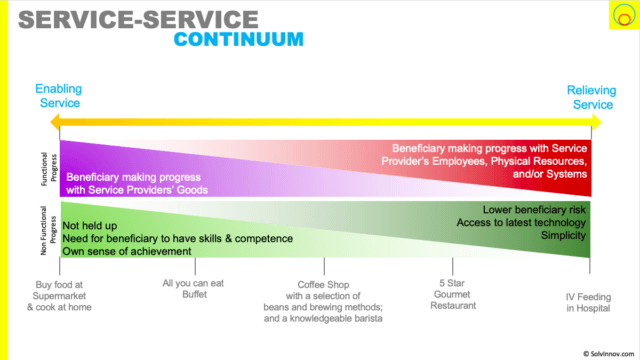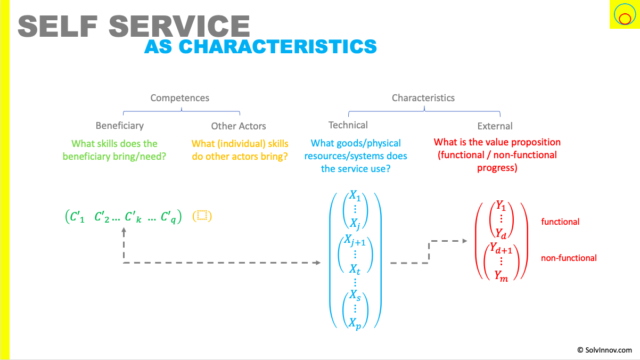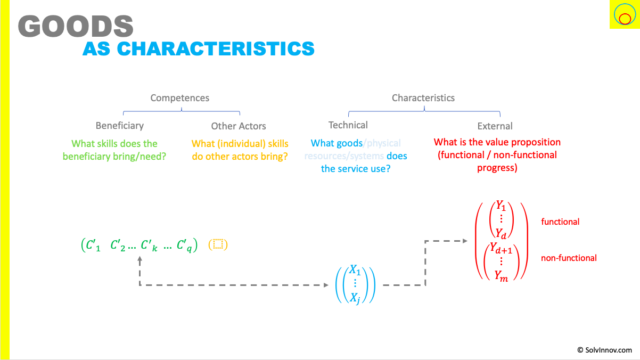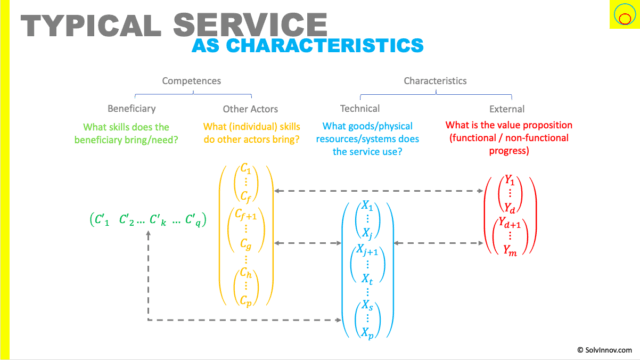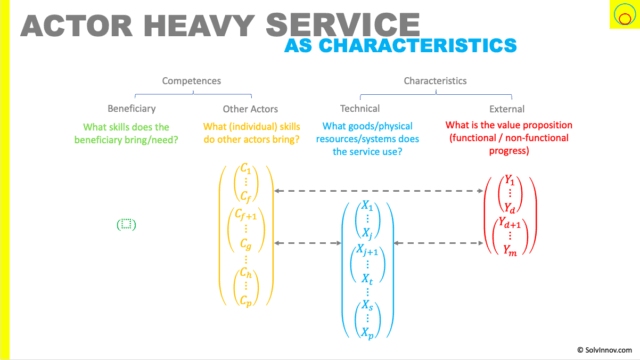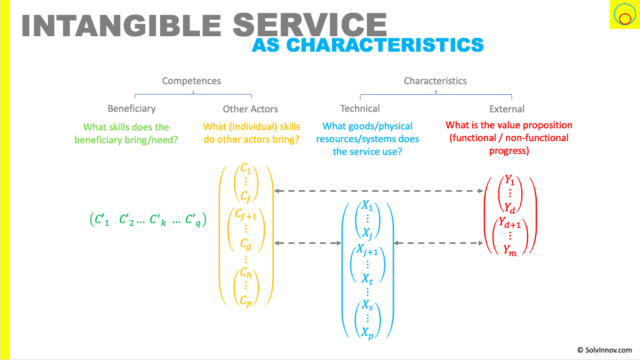Let’s see what various service types on the service-service continuum look like in my updated Gallouj & Weinstein model. And don’t forget that in service-dominant logic, goods are a distribution mechanism for service. So they readily fit into this model.
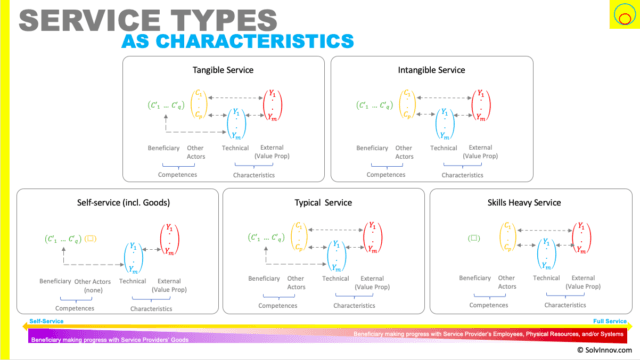
We find that the model nicely underpins all service types.
Implications
Understanding is the first step towards systematic innovation. And this model helps us understand all service types. We’ll also find that it helps us understand all types of innovation.
The Idea
In a couple of previous articles, I’ve introduced Gallouj & Weinstein’s model of service as characteristics. As well as presenting a number of updates to take a more service-dominant logic perspective, reflect the ecosystem nature service, and, focus external characteristics to the value proposition. And I’ve noted how the model, original or updated, reflects Grönroos’ definition of service.
You can switch between my rearrangement of Grönroos’ definition and my updated model in the diagram below to refresh your memory. Or click on the links above to dig deeper.


What I want to do in this article is give confidence that this model covers all service types. Not forgetting that in service-dominant logic, goods are a distribution model for service. So for me, there is no goods vs service discussion. Everything lives on the service-service continuum.
And it is from this continuum that we will take our examples. That is to say:
- Self-service (using physical resources / systems of the other actors)
- Goods (Self-service using goods of other actors)
- Tangible service
- Intangible service
So, let’s start with goods.
Self-Service
We see the defining features of self-service are the reliance on beneficiary skills and their use of technical characteristics (goods/systems/physical resources provided by the other actors). As well as the lack of integration with other actor competences. I represent this in Figure 1.
Goods
In our service-dominant logic, we see goods as distribution mechanisms for service. Which I further interpret as they freeze a service. Allowing it to be distributed to another time/place. And then be unfrozen by the beneficiary when required.
The hammer that you own can be seen as a goods. Firstly, it encapsulates the skill of another actor. One who knows how to spike a nail into an object. Secondly, that frozen skill is distributed from that other actor to you. And finally, you unfreeze those skills and integrate them with your own competences where and when you want to make the progress of spiking a nail into a wall.
We can therefore represent goods in our model as shown in Figure 1 – as a simplified case of self-service.
Where we interpret technical characteristics as being captured only by goods. And most likely a singular goods from a single actor. Goods maybe single use or meant to be used multiple times.
Typical Service
I characterise typical service as those that have obvious co-value generation through the integration of beneficiary and other actor competences to realise the progress stated in the external characteristics.
They come in various forms. Which differentiate themselves by the level of integration with technical characteristics. It could be only the beneficiary integrating. Or the beneficiary and some combination of other actors. It may even be just some combination of other actors. As well as the balance between requirements for beneficiary and other actor skills. They are the middle ground on the service-service continuum.
Skills Heavy Service
Our final category of service is one that relies heavily on other actors competences. These are characterised by having negligible need for beneficiary competences during the act of service.
A subset of these are Knowledge Intensive Based Service (KIBS).
Tangible versus Intangible Services
An alternative is to think in terms of tangible and intangible services. Tangible service includes some element of goods/physical resource or use of system of the other actors by the beneficiary.
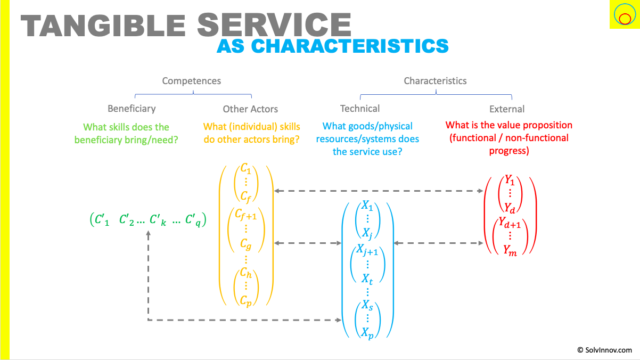
Whereas intangible has none of that. And is purely experienced by the beneficiary as an interaction with other actors’ employees.

